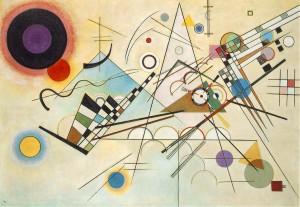Asian Antiques: Japanese Combs of the Edo Period
July 27th, 2010 by adminThe Japanese Edo period (named for the city that would later become Tokyo) began in 1600 and ended after 1868. This historical epoch was more or less defined by the rise of Tokyo as an urban center, and by a corresponding shift from a feudal agrarian culture to that of a city-oriented, expanding and cosmopolitan middle class.
This rapid cultural shift left behind many categories of now-collectable Asian antiques– tools, artwork and household items that remain to document the lifestyle of the times. Among Asian antiques aficionados, the Edo period is most often associated with woodcuts, calligraphy, inlay, and other evidence of this flourishing age for the arts, some of which may be covered in later postings. But for the moment, we’ll narrow our focus to one specific relic of the Edo period prized by collectors of Asian antiques—hair accessories.
Just prior to the peace and economic prosperity of the 17th century, the arts in general languished in Japan. Clothing styles and ornamentation were simple and indistinct, and women typically wore their hair loose or tied back with a length of string. But with the Edo expansion of wealth came a shift in lifestyle for both men and women, and hair arrangement among women became an increasingly elaborate expression of status and artistry.
The complicated coiffures of the Edo period were designed by elevating waxed tresses into one of several forms of chignon, or bun. The hair would then be fixed in place with variations of three items: The hairpin (kanzashi), the hair stick (kogai), and the comb (kushi). These three items structured the hairstyles that we often see depicted in Edo woodcuts today, such as the maru mage, a large bun worn by actresses or courtesans, or the shimada mage, an updo often adopted by stylish housewives. Some of these coiffures took so many hours to create that women would sleep with their heads propped up on a padded wooden stand at night in order to protect the style and keep it intact.
Pins, sticks and combs need not be kept in sets in order to be valuable, though of course a set is a welcome find, especially if the kogai and kushi are kept in an original box. But some collectors of Asian antiques have a preference for one of these things more so than the others, and indeed, there is so much to know and so much beauty and artistry in combs alone that an article dedicated to Edo period combs could be volumes long and still not cover the topic adequately.
A few things for a collector of kushi to keep an eye on: First, the shape of the comb. My favorite Edo period combs are wooden and half-moon shaped, sometimes lacquered, with the tines very close together. Second, the condition. Are the teeth intact? Does the handle show signs of wear? And third, the design. The handle, or curved side of the half-moon, often has a flat surface that bears detailing, such as intricate mother-of-pearl inlay in a landscape or floral pattern. The details of the design should ideally continue onto the spine of the comb. And in some beautiful examples, the design extends across the teeth of the comb as well. This is especially appealing in combs of horn or tortoiseshell, the other materials from which kushi are often carved.
By Erin Sweeney

 There is always something new to see at the Metropolitan Museum of Art in New York City. It is certainly one of the most recognized museums in this country, offering some of the most important permanent and traveling exhibits for the entire world to see.
There is always something new to see at the Metropolitan Museum of Art in New York City. It is certainly one of the most recognized museums in this country, offering some of the most important permanent and traveling exhibits for the entire world to see. So you’ve decided to make the leap and collect art. You read about Hugh Grant buying an Andy Warhol for $3 million and selling it later for a little less than $25 million and you think…this is for me!
So you’ve decided to make the leap and collect art. You read about Hugh Grant buying an Andy Warhol for $3 million and selling it later for a little less than $25 million and you think…this is for me!